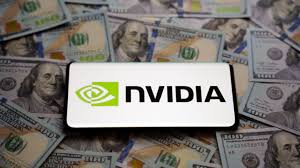Social Media Marketing

Social Media Marketing

Definition of Social Media Marketing
Social media marketing is an online marketing tactic that utilizes social web sites to address a target audience, make your brand known, drive traffic to a site, and boost sales. It is not merely a matter of posting it demands planning, imagination, metrics, and ongoing engagement.
Key Objectives
• Brand Awareness: Utilize attractive and engaging content to place your brand on the map.
• Lead Generation: Connect prospects to gated content, promotions, and forms.
• Customer Retention: Inspire followers to build long-term loyalty and relationships.
• Traffic Generation: Drive visitors in through links and related CTAs in your posts to send users to your site.
• Sales Conversion: Sell followers as paying customers through social commerce and sponsored ads.
Why It Matters
With more than 4.9 billion social media consumers worldwide in 2025, social media marketing provides unparalleled visibility to masses. Companies that don’t use social websites will be losing customer engagement and online visibility.
Social Media Marketing History and Evolution
Early 2000s: Genesis of Social Sites
MySpace and Friendster websites were the support pillars of social marketing, yet it was quite disorganized. Companies started to join and meet creators.
2004–2010: Facebook & Twitter Era
• Facebook (2004) enabled companies to create pages and groups.
• Twitter (2006) enabled marketers and customer service to engage in real-time conversations through tweets.
• Companies started using these platforms as a reputation management and consumer feedback tool.
2010–2016: The Visual Revolution
• Instagram (2010) began with photo-sharing and gave birth to visually-led campaigns.
• Pinterest (2010) and Snapchat (2011) introduced us to new forms of creative content.
• Marketing used images and video as storytelling tools.
2016–2025: The Video & AI Era
• Short video went mainstream with TikTok, and brands began producing “viral” content.
• AI-based tools now assist with content creation, chatbots, and personalization.
• Influencer marketing came of age with micro and nano-influencers being the most discussed influence.
Pillars of Social Media Marketing

1. Strategy
A social media marketing campaign is not successful until and unless it’s well-planned. It lays down your tone, goals, audience, and content pillars of your brand.
2. Content Creation
Content is the king. Tailor the content platform-wise share stories on Instagram, threads on X (Twitter), videos on TikTok and YouTube.
3. Scheduling and Publishing
Utilize use of content calendars and auto-publishing software like Hootsuite or Buffer in order to keep it so.
4. Engagement
It becomes interesting because it is more seen and believable. Respond to the users who comment on your post, run contests, and make interesting polls.
5. Analytics
Monitor KPIs such as the engagement rate, reach, and CTR in order to record what works and tweak it accordingly.
Social Media Marketing Goal Setting
Necessity of Goal Setting
Without clear objectives, your social media marketing can be quite ambiguous or unsuccessful. Goals set content creation, budget, and success metrics.
Shared Goals
• Increase Brand Awareness: Post often and utilize popular hashtags.
• Increase Engagement: Post interesting content, ask questions, and go live.
• Generate Leads: Provide lead magnets such as eBooks, guides, and webinars.
• Enhance Customer Support: Utilize social DMs and bots to fix issues.
• Build a Community: Build groups and encourage engagement.
Utilizing SMART Goals
Ensure each goal is:
• Specific – i.e., Gain 1,000 followers within 30 days.
• Measurable – Monitor with metrics.
• Achievable – Be practical.
• Relevant – Be business goal-pertinent.
• Time-bound – Include time constraints.
Choosing the Right Platforms
Understanding Platform Dynamics
Each social site has its following and type of content that it supports. A successful social media marketing campaign necessitates platform selection to match business goals and audience behavior.

Platform Overview & Use Cases
• Facebook: Most effective for community-building, groups, and Facebook Ads to multicultural groups.
• Instagram: Most effective for fashion, beauty, food, and lifestyle businesses. Use images and Stories/Reels.
• Twitter (X): Most effective for live promotions, announcements, customer service, and trending topics.
• LinkedIn: B2B marketing, recruitment, thought leadership, and industry-based content.
• TikTok: Most effective for reaching Gen Z and Millennials with creative, bite-sized video content.
• YouTube: Ideal for how-to, long-form video, product demonstration, and vlogging.
• Pinterest: Ideal for niches including DIY, home decor, cooking, and weddings.
Platform Choosing Tips
• Know your audience.
• Search for strengths within platforms.
• Research competition.
• Quality or quantity start with 2 – 3 and expand.
Learning More about Your Audience
Why It Is Important to Get to Know Your Audience
Knowing your audience for social media marketing is paramount because it gives the ability to send customized, engaging, and converting content.
Audience Segmentation
Divide your audience into:
• Demographics (Location, gender, age)
• Psychographics (Interests, lifestyle, hobbies)
• Behavior (Purchase history, pattern of engagement)
• Pain Points (Your product/service’s ability to solve problems)
Research Tools
• Facebook Audience Insights: Offers information on likes, interests, and place.
• Google Analytics: Offers the feature to measure website visitor behavior and social referrals.
• Social Listening Tools: Brand24 and Mention monitor what people are talking about your brand.
Building Buyer Personas
Build rich personas with names, background, interests, and pet peeves. These inform content and ad targeting strategy for your social marketing efforts.
Social Media Strategy
How to Develop a Strategy
1. Assess Current Channels: Inventory what is and isn’t working.
2. Build Buyer Personas: Get to know your folk and talk like them.
3. SMART Goals: Define as Specific and objective-led.
4. Content Pillars: Select 3–5 subjects that your brand constantly talks about.
5. Content Calendar: Organize posts in date, platform, type, and caption terms.
6. Set Funds Aside: Spend money on ads, tools, and employees.
7. Test and Refine: A/B test the content and report data-driven changes.
Importance of Continuity
Consistency is what builds trust and creates brand presence on social media marketing. Posting regularly makes algorithms love your content.
Developing Social Media Content
Golden Rule: Create Value
Your content should educate, entertain, or engage. Great content gets shared, commented upon, and converted.
Content Types Explained
• Infographics: Visualize data for immediate understanding.
• Short-Form Video: Optimized for tips, hacks, and trends (Reels, TikToks).
• Long-Form Video: Optimized for tutorials, interviews, and product deep-dives.
• ектиStories: Transient content that boosts daily engagement.
• Memes: Humor as a unifying factor.
• UKC (User-Generated Content): Fosters trust and authenticity.
• Quizzes & Polls: Encourage engagement and feedback.
Content Best Practices
• Make use of high-quality visuals.
• Writing good captions.
• Need to have clear CTAs (Call-To-Actions).
• Must be compliant with platform-specific size and text rules
The Strength of Video within Social Media Marketing
Why Video Works
Video content is the most engaging and sharable way of social media marketing. It grabs attention fast and tells stories effectively.

Types of Social Videos
• Explainer Videos: Simplify complex things.
• Behind-the-Scenes: Personalize your brand.
• Live Streams: Enable real-time interaction and honesty.
• Testimonials: Build credibility with social proof.
• Product Demos: Show your product.
Optimization Tips
• REMEMBER: Make the first 3 seconds powerful.
• Use captions and subtitles.
• Add branded intro/outros.
• Add bold CTAs (Shop Now, Learn More, etc.).
Social Media Marketing Tools and Software
Top Tools You Should Know
• Hootsuite: Schedule, plan, and track posts across networks.
• Canva: Design-friendly to non-designers.
• Buffer: Easy scheduling and performance tracking.
• Later: Visual-first planner that works beautifully on Instagram and Pinterest.
• Loomly: Intelligent collaboration, brainstorming, and planning tool.
• Sprout Social: Advanced-analytics, full-suite platform with CRM.

How Tools Save Time
Automation saves time, reduces errors, and enables teams to focus on strategy and creativity—a formula for effective social media marketing.
Influencer Marketing
What Is Influencer Marketing?
It’s a social media marketing model where brands collaborate with influencers—social professionals who possess an engaged social audience and authority in their space of interest.
Types of Influencers
• Nano (1K–10K followers) – High engagement, local reach
• Micro (10K–100K) – Mass audience, low cost
• Macro (100K–1M) – Quality, mass reach
• Mega (1M+) – Celebrity premium reach

Influencer Marketing
• Determine best fit through tools like Upfluence, AspireIQ.
• Make goals and deliverables more specific.
• Track performance via UTM link and promo codes.
Paid Social Media Advertising Why You Need to Use Paid Ads
As organic reach declines, paid advertising picks up the slack in your social media marketing. Demographically and behaviorally segment and target, and target of interest.
Ad Types by Platform
• Facebook/ Instagram: Story, video, and carousel.
• Twitter: Trends and sponsored tweets.
• LinkedIn: InMail and sponsored content.
• TikTok: Branded hashtag challenges and TopView ads.
• YouTube: In-stream and pre-roll.
Best Practices
• A/B test creative.
• Good copy and graphics.
• Above the fold CTAs.
• Optimization of mobile landing pages.
Social Media Marketing KPIs and Analytics
Why Metrics Matter
You can’t repair what you can’t quantify. Social media marketing KPIs allow you to quantify the effectiveness of your campaigns.
Key Metrics to Monitor
• Reach: The number of individuals who viewed your content.
• Impressions: Number of views (with repetitions).
• Engagement Rate: Likes, comments, shares per followers.
• Click-Through Rate (CTR): How often people clicked your links.
• Conversion Rate: People who took a desired action.
• Follower Growth: Net follower growth within a period.
• Customer Acquisition Cost (CAC): Dollars spent per customer acquired.
Analytics Tools
• Meta Business Suite
• Instagram Insights
• LinkedIn Analytics
• Google Analytics (for social referrals)
Trends Behind Social Media Marketing
Future Trends
• AI-Powered Content Creation: AI tools such as ChatGPT assist in writing captions, ad copy, and video script.
• AR Filters & Lenses: Involve user and enrich experience.
• Social Commerce: In-app purchase of products through Instagram Shops, Facebook Marketplace, and TikTok Shop.
• Voice Search: Voice search and smart assistant optimization of the content.
• Sustainability Messaging: Eco-friendly brands are what the consumers seek.
Being Ahead
Flexibility towards change, adaptability, and ongoing learning are the success mantra for social media marketing.
Social Media Marketing Case Studies
Nike – Instagram Reels
Nike leverages well-produced Reels of influencers and emotionally compelling storytelling to connect and share values with brand communities.
Wendy’s – Twitter Jabs
Wendy’s on Twitter is renowned for its snarky, aggressive comebacks. That aggressive demeanor has been sufficient to create customer engagement with trending.
GoPro – UGC Marketing
GoPro leverages user-generated content in an attempt to demonstrate capability of the product, establishing credibility and authenticity in communities.
Social Media Marketing Challenges
Shared Challenges
• Algorithm Changes: Websites refresh periodically while ranking content.
• Trolls and Negative Reviews: Brands need to walk a tightrope with public perception.
• Content Noise: Becoming heard is harder.
• Relying on Sites: Visibility will suffer from outage or policy problems.
• Data Privacy Regulation: GDPR and CCPA are not opt-in, they are required.

Solutions
• Diversify sites.
• Build mailing lists.
• Be genuine.
• Be ethical and honest.
Social Media Marketing Future
What’s Next?
• Hyper-Personalization: AI-driven content + personal interests.
• Live Commerce: Live product displays + interactive purchasing.
• Virtual Influencers: AI-created image influencers with enormous followings.
• More AR/VR Integration: Experience-driven branding.
• More Decentralized Networks: Blockchain-based networks.
How to Have a Career in Social Media Marketing
Steps to Start
1. Learn Fundamentals: Learn branding, content strategy, and metrics.
2. Get Certified: Meta Blueprint, HubSpot, Google Digital Garage.
3. Practice: Create own page or create small business pro bono.
4. Create a Portfolio: Share content, campaigns, and analytics.
5. Get Current: Listen to podcasts, blog readings, watch webinars.
Job Titles to Research
• Social Media Manager
• Content Creator
• Community Manager
• Paid Advertising Specialist
• Influencer Marketing Coordinator
• Social Media Analyst
Conclusion
Attention is money today, and social media marketing is the key to reaching your market, building your business, and cutting through the cyber noise. It’s not hype it’s business reality.

To stay ahead of the curve, make sure to explore the top social media marketing trends of 2025 and integrate them into your strategy. And if you’re looking to upskill or start a career in this dynamic field, check out the best digital marketing course in Coimbatore offered by Yale IT Skill Hub a comprehensive program designed for the marketers of tomorrow.







